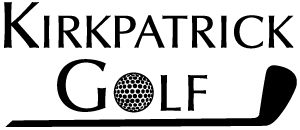Timing is a common word in the vocabulary of golf as it relates to coordinating all the movements that comprise the golf swing. You’ll often hear announcers during a golf tournament describing a player’s excellent timing when they are playing well, or that their erratic play is due to poor timing. Most golfers, however would find it difficult to describe exactly what timing refers to in the golf swing. Timing is related to two specific physical components of the swing. One is body action and the other is arm, wrist and hand action. By body I mean torso, hips, legs and feet. This unit generates power by coiling and uncoiling. By maintaining a steady head and anchoring your feet you coil to the right in the backswing then uncoil to the left in the downswing. The other unit refers to the swinging action of the hands, wrists and arms. A perfectly timed golf swing is one in which the coiling and uncoiling action of the body blends with the swinging action of the arms, wrists and hands to deliver the clubface squarely to the ball at the moment of impact.
By understanding how the two different movements inter-relate it is relatively simple to diagnose poor swing coordination. The ball flight will tell you whether the two are in sync or not. Take for example a player with a basically sound swing, and a grip that normally squares the clubface. You would expect this player to hit straight and solid shots. Instead they are slicing most shots and topping or thinning others. The cause is almost always too much body action in the downswing compared to their arm and hand action. To correct this the player needs to slow down the lower body unwind and increase the use of the clubhead by speeding up the arm swing. Hit earlier with the clubhead and later with the body, until the ball is struck solidly and flies straight. A helpful thought is swinging the clubhead down and through the ball before your shoulders unwind. If you have the other problem of hooking the ball or hitting fat shots you need to do the opposite. Here the arm and hand swing is too fast and the body unwind is too slow. Because the legs and hips haven’t cleared a path there is no room for his fast moving arms to swing out towards the target. Instead the wrists are forced to roll over, closing the clubface so it faces left of the target at impact. The remedy here is to speed up the leg and hip action relative to the movement of the arms, wrists and hands. Initiate your downswing by turning the left hip to the left and keep turning while slowing the arm and hand action. Solid and straight shots will result when you have found the right balance.
In recent years many instructors have promoted teaching a body method while others have advocated exclusive use of the hands, wrists and arms. In my opinion the golf swing is neither primarily body action nor hand and arm action, but a blend or balance of both. And the word that defines that is timing.
